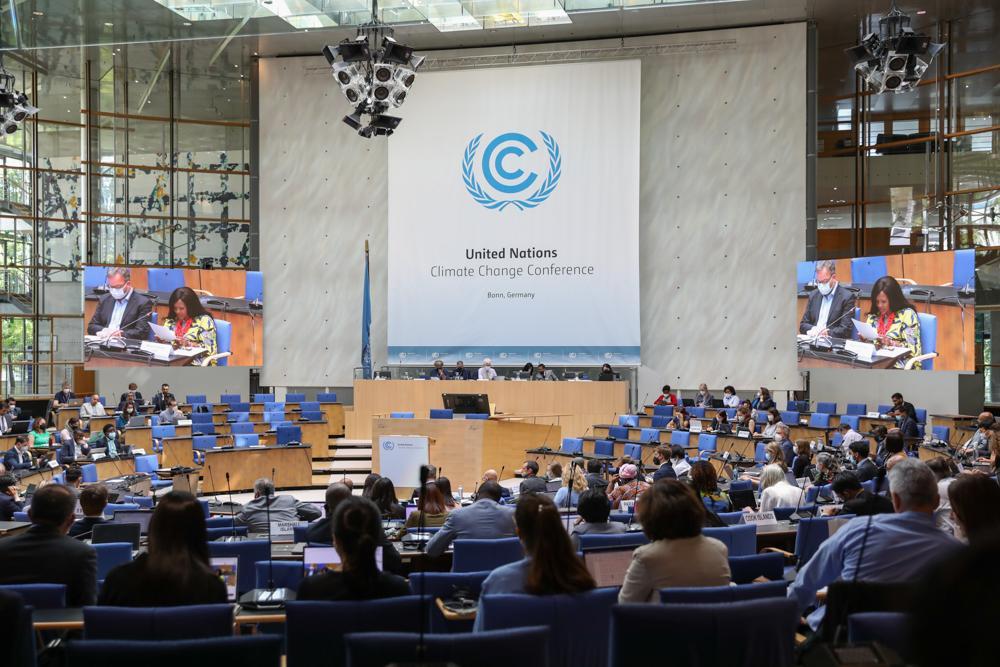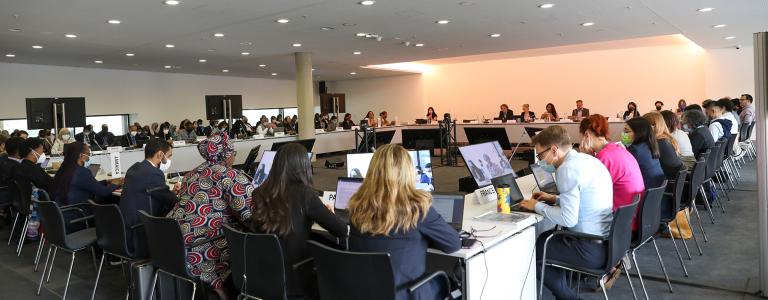Putting Equity at the Heart of the Global Stocktake
Capturing the world's collective progress towards achieving the Paris Agreement goals requires a look at who is being left behind and what we could do to create an equitable, climate-resilient future for all.
Since the beginning of the UN Framework Convention on Climate Change (UNFCCC), equity has always been emphasized as one of the core guiding principles by countries and civil society alike. Recognizing the importance and everlasting relevance of this principle, the Paris Agreement is firmly anchored in the equity principle, including in the articles and decisions relevant to the Global Stocktake (GST). In Katowice in 2018, countries decided that the GST should be conducted in a “comprehensive and facilitative manner… in the light of equity and the best available science” (Decision 19/CMA.1). This decision document guides the overall GST process, which focuses on assessing the world’s collective progress in meeting the Paris Agreement’s goals and providing a set of policy-relevant recommendations for countries to enhance their climate ambition.
With the Sharm el-Sheikh Climate Change Conference (COP 27) fast approaching, we look at what it means for the GST process to be equitable and what more needs to be done to ensure a successful, fair conclusion of the GST at COP 28 in the United Arab Emirates (UAE).
What Do We Mean by Equity?
The definition of equity differs according to the context. The legal definition of “equity” is still contested within climate diplomacy. However, in the context of climate action, the majority of people agree that “equity” refers to the “fair distribution of responsibilities, benefits, risks, and uncertainties, both in the inter-generational but also intra-generational sense,” taking into consideration historical and socially determined disadvantages.
Equity refers to the fair distribution of responsibilities, benefits, risks, and uncertainties, both in the inter-generational but also intra-generational sense.
This means taking a step back and looking at who are the most responsible actors for the greenhouse gas emissions that led to today’s climate crisis, who are the actors most affected by climate change today, and how socio-economic inequality and other systemic injustices lead to compounded risks and intersecting vulnerabilities.
The mismatch between those who have contributed the most to global warming and those who are the most vulnerable today represents extreme inequality in climate change’s causes and consequences. And therefore, this inequality calls for the fair distribution of responsibilities in terms of emissions reduction, adaptation to climate impacts, and the provision of climate finance, which necessitate special attention to be paid to equity in the GST process in order to arrive at a fair assessment of collective progress.
Three Reasons Why Equity Matters for the GST
It is not easy to craft a collective climate story that includes everyone, everywhere, and touches on everything. But it is the job of the GST to do just that—collect as much information from as many sources as possible, comprehensively and accurately assess the state of global climate action, and then construct a picture that tells the story of where we are, where we want to go, and how we get there. From information collection to technical assessments to the final consideration of outputs, equity, in all forms, needs to be ingrained throughout the life cycle of the GST.
Considering equity ensures no one is left behind
The GST will assess the collective progress on mitigation, adaptation, and resource mobilization (finance, technology, and capacity building). Aside from crunching the numbers on how many emissions countries aspire to reduce or how much adaptation finance was offered to developing countries, the human aspect is equally important. Are existing climate efforts reducing the vulnerability of communities and people to climate change equitably? Are countries’ climate actions advancing gender equality and social inclusion for people of all genders and social backgrounds? And are countries developing, implementing, monitoring, and evaluating their climate action measures in a gender-responsive, participatory, and fully transparent manner, considering vulnerable groups, communities, and ecosystems?
Equitable sourcing of information for the Technical Dialogues contributes to a fair and accurate assessment of the impacts of existing—and planned—climate actions on people’s lives and livelihoods, as well as the gaps and needs of local communities to enhance climate ambition. In the Technical Dialogues, equity should be reflected in the welcoming of knowledge and inputs from diverse sources, especially from the Global South, marginalized communities, or those most vulnerable to climate change, all of whom lack a voice at the international level.
We have to ensure that we give a voice to people who are often considered voiceless in conversations about climate change and climate adaptation.
Global North–South equity informs fair assessments
Intergenerational equity reminds us of our responsibilities to future generations

Telling an Equitable Climate Story at COP 27 and Beyond
The first Technical Dialogue in Bonn and the entire GST preparation process so far have represented a novel approach to inclusivity by the UNFCCC in terms of its openness and genuine desire to engage with as many stakeholders as possible to ensure diversity and equity. However, there is always room for improvement so that equity can be further reflected in the GST process.
Some observers have noted insufficient inputs from the Global South, Indigenous Peoples, and sub-national-level practitioners, and the participant list lacks diversity and gender balance. Improving the participation of these groups must be a priority for the Technical Dialogue co-facilitators at COP 27 and beyond. Furthermore, developing countries are calling for more attention to and discussion space for the insufficient resource mobilization that is impeding the ambitious implementation of climate actions, as well as ways to overcome the barriers and challenges. IISD’s own submissions have noted the importance of assessing good governance, gender responsiveness, social inclusion, and attentiveness to the most vulnerable people during the GST’s technical assessment component.
At COP 27 and at the two UN Climate Change Conferences taking place in Bonn and the United Arab Emirates next year, countries and the Technical Dialogue co-facilitators must ensure that:
- The Technical Dialogues remain inclusive and accessible for various civil society stakeholders, including Indigenous Peoples, representatives of the most vulnerable groups, children and youth, and local communities.
- National and sub-national conversations contributing to the Technical Dialogues are held in an inclusive, participatory, and equitable manner. With many grassroots and local stakeholders still excluded from the UNFCCC process, these country-level consultations are imperative to bringing perspectives from people who cannot be in the room for the GST process.
- Adequate and focused discussions on resource mobilization and adaptation finance are taking place.
- The final output of the GST provides practical, actionable, and policy-relevant recommendations stemming from countries’ and practitioners’ experiences and lessons learned so countries could improve their climate action and address challenges, gaps, and barriers in an equitable manner.
Together, these elements ensure the GST process could craft an equitable climate story and a cautionary tale for countries to act on and step up their ambition.
The banner image used in this article is by IISD/ENB's Kiara Worth from the Earth Negotiations Bulletin team's reporting of the Bonn Climate Conference in June 2022.
You might also be interested in
Learning From Gender-Responsive National Adaptation Plan Processes: Insights from countries to inform the review of the UNFCCC Gender Action Plan
Based on the priority actions of 10 African and Caribbean countries for integrating gender equality in their National Adaptation Plan (NAP) processes, we identified recommendations for effectively advancing the Gender Action Plan (GAP) under the United Nations Framework Convention on Climate Change (UNFCCC).
What Does an Inclusive Global Stocktake Look Like for Civil Society?
The inaugural Global Stocktake will conclude at COP 28 in 2023. With the process well underway, the current and upcoming phases of the Global Stocktake must be open and inclusive in order to succeed.
How to Raise the GlaSS on the Global Goal on Adaptation at COP 27: Four foundations to build upon
Over the past year, the Global Goal on Adaptation (GGA) has gained attention from country policy-makers, practitioners, and academics trying to solve this puzzle: What relevant and appropriate global goals on adaptation should the Paris Agreement incorporate?
Four Key Elements to Ensure a Successful Global Goal on Adaptation
As the final rounds of negotiations on the GGA kick off at COP 28, a looming question remains: Will it be comprehensive enough for countries to implement in the years ahead?
